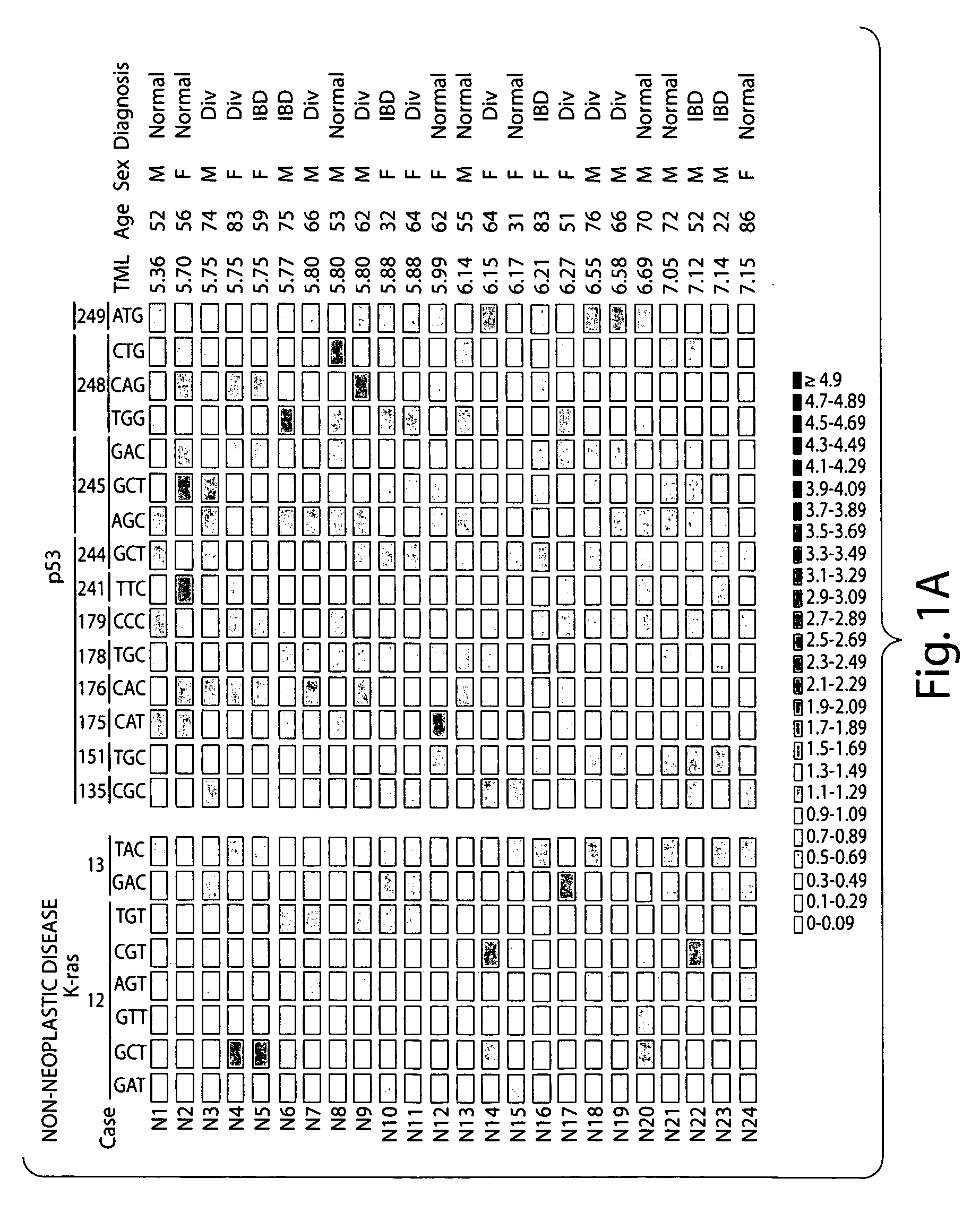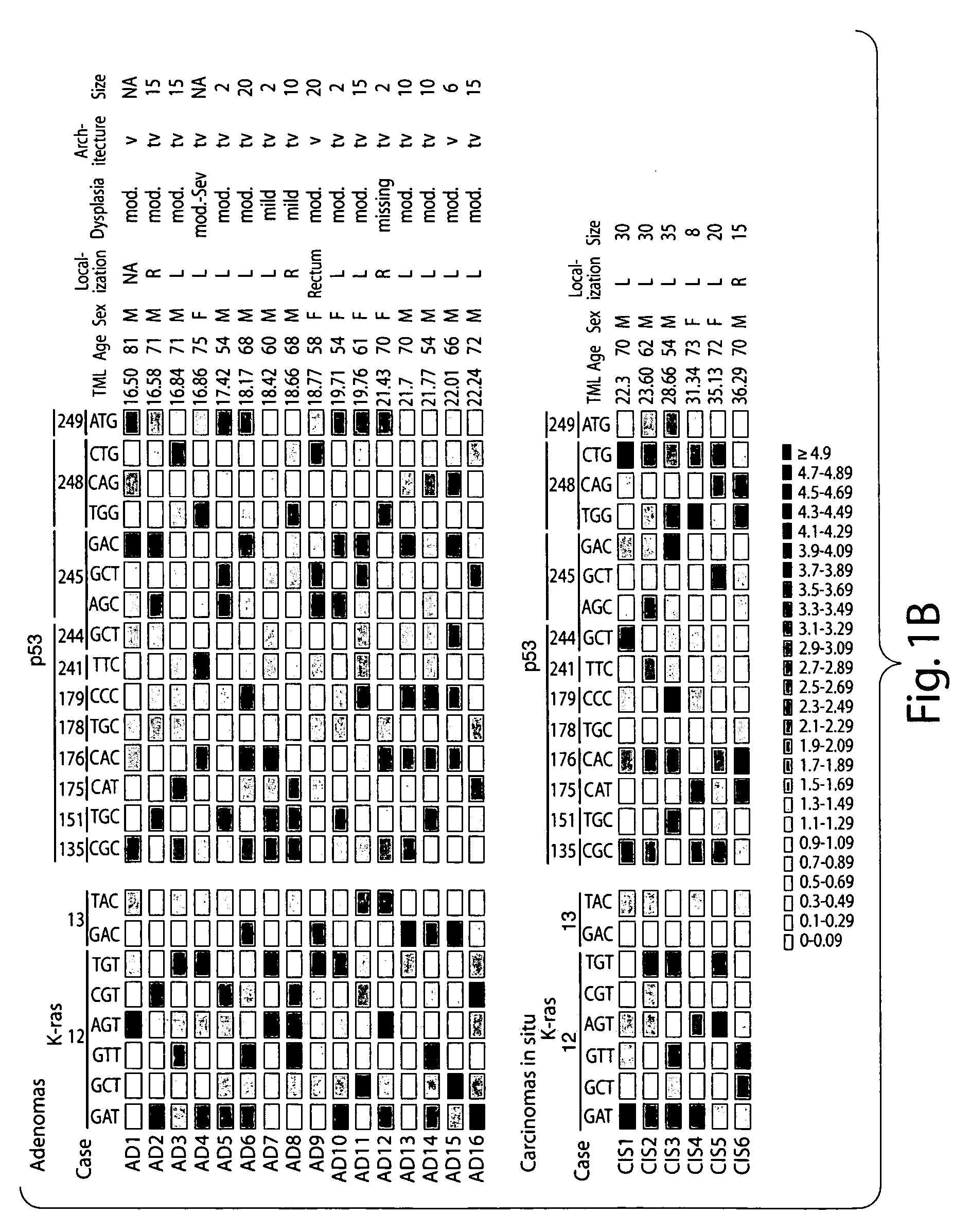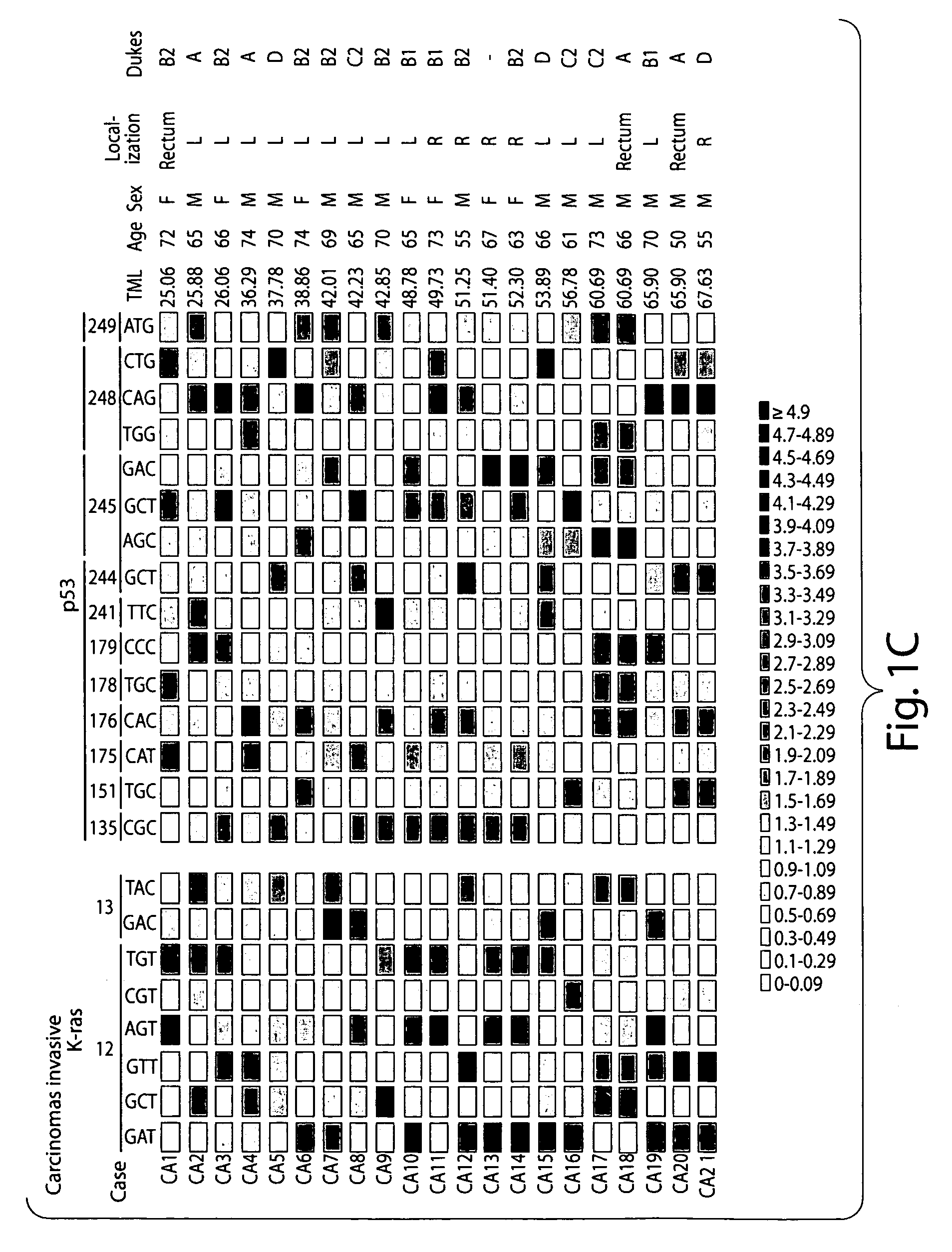Methods and compositions for cancer diagnosis
a cancer diagnosis and composition technology, applied in the field of cancer diagnosis, can solve the problems of difficult to demonstrate the direct linkage between dysplasia and carcinoma, difficult to treat cancer, and impaired changes by morphologic criteria
- Summary
- Abstract
- Description
- Claims
- Application Information
AI Technical Summary
Benefits of technology
Problems solved by technology
Method used
Image
Examples
example 1
ysis of Colorectal Cancer in Human Subjects
[0100] The methods of the present invention were performed on a population of human subjects (termed “patients” herein) suffering from or at risk of developing a colorectal cancer.
Patients Accrual and Stool Collection
[0101] A total of 67 samples from two centers (Institut Catalá d'Oncologia and Hospital de Sant Pau) were included. Forty (9 normal, 31 tumors) bowel lavage fluid samples were collected during performance of screening colonoscopies after positive FOBT testing. The remaining 20 (11 normal, 9 tumors) fluids were obtained immediately prior to colonoscopy from symptomatic patients after cathartic preparation. Finally, a set of 7 solid stools (4 normal, 3 tumors) of symptomatic patients undergoing a colonoscopy was collected. Final diagnosis was: 24 non-neoplastic diseases (6 inflammatory bowel disease, 9 colonic diverticulosis and 9 normal colonoscopies), 16 adenomas, 6 carcinomas in situ and 21 invasive carcinomas. All fluid sa...
example 2
MLDA analysis of Pancreatic Cancer in Human Subjects
[0123] The methods of the present invention were performed on a population of human subjects (also termed “patients” herein) suffering from or at risk of developing a pancreatic cancer.
Patient Accrual and Stool Collection
[0124] Data in human subjects suffering from or at risk of developing pancreatic cancer was obtained by analyzing the soluble DNA found in pancreatic juice obtained by canulation of the pancreatic duct, or after stimulation with secretin.
[0125] An oligonucleotide zip-code micro-array with rolling circle amplification signal enhancement enables the simultaneous interrogation of tissue fluids for a moderate number of alleles (Bhatia et al. J of Clin One 2003: Vol 21, No 23; 4386-4394) and the detection of low prevalence allelic variants. Alleles of both the Ki-ras and p53 genes are well suited for MLDA of pancreatic juice (Olivier et al. Hum Mutat 2002 June; 19(6): 607-14; Hruban et al. Clin Cancer Res 2000a; Vo...
example 3
In silico MLDA Analysis
[0132] Herein described is an in silico simulation disclosing a stochastic model that explains the dynamics and distribution of mutational load and provides insight into the relation of parameters reflecting metapopulation dynamics to the emergence of tumors and therefore to the measure of cancer risk. The model, based on a micro-evolutionary view of carcinogenesis, takes into account intermittent global disturbances applied to a spatially structured tissue containing metapopulations of cells. Without disturbance, and for an arbitrary length of time representing the life span of the organism-host it is possible to parametrize the model in such a way that despite the occurrence of mutations no tumors emerge. Within a broad range of parameters we observed that intermediate frequencies and intensities of disturbance would lead to higher probabilities of tumor formation than in states with more extreme or no disturbances but with equivalent mutation rates, mutate...
PUM
| Property | Measurement | Unit |
|---|---|---|
| Fraction | aaaaa | aaaaa |
| Fraction | aaaaa | aaaaa |
| Fraction | aaaaa | aaaaa |
Abstract
Description
Claims
Application Information
 Login to View More
Login to View More - R&D
- Intellectual Property
- Life Sciences
- Materials
- Tech Scout
- Unparalleled Data Quality
- Higher Quality Content
- 60% Fewer Hallucinations
Browse by: Latest US Patents, China's latest patents, Technical Efficacy Thesaurus, Application Domain, Technology Topic, Popular Technical Reports.
© 2025 PatSnap. All rights reserved.Legal|Privacy policy|Modern Slavery Act Transparency Statement|Sitemap|About US| Contact US: help@patsnap.com



